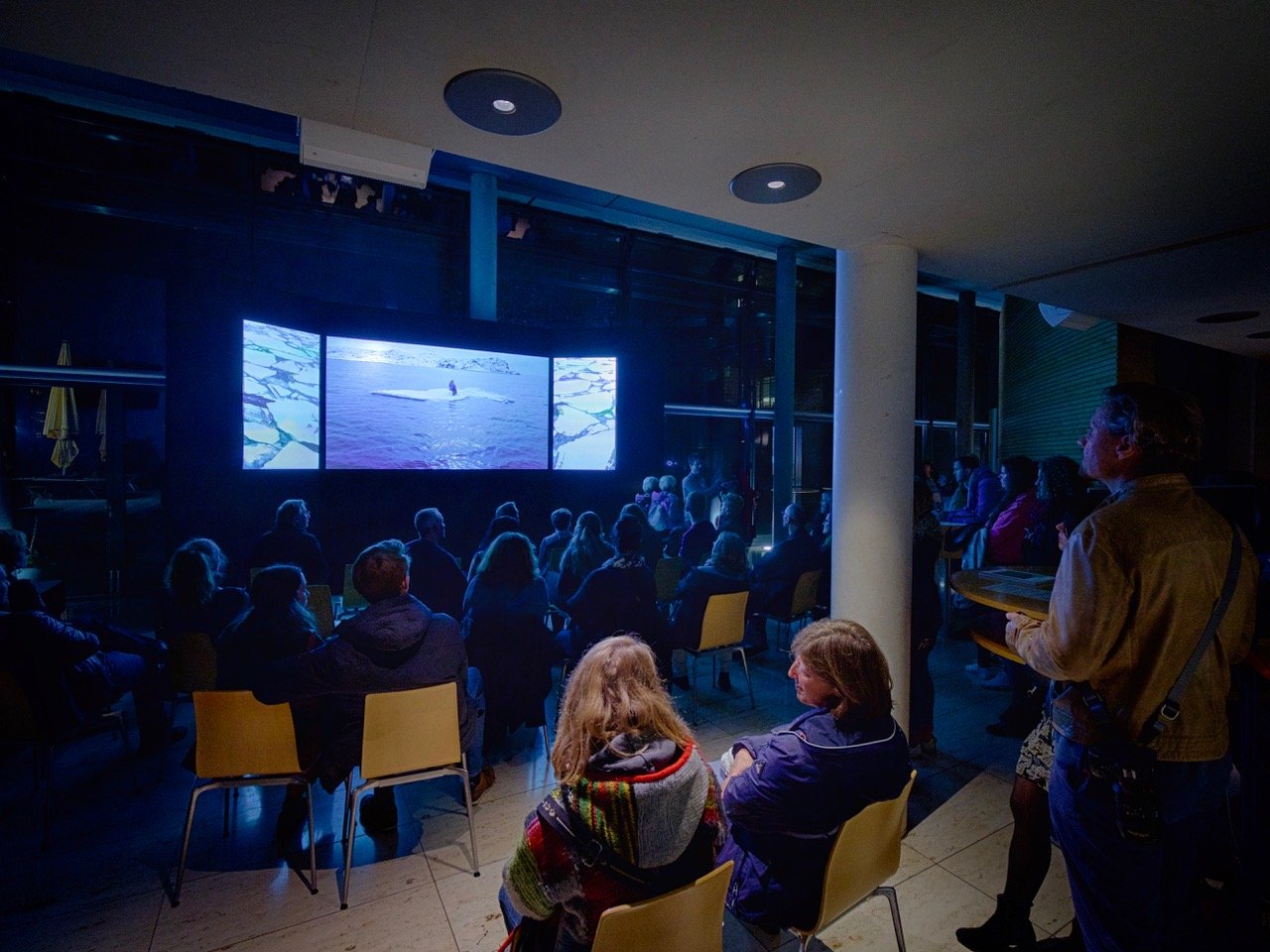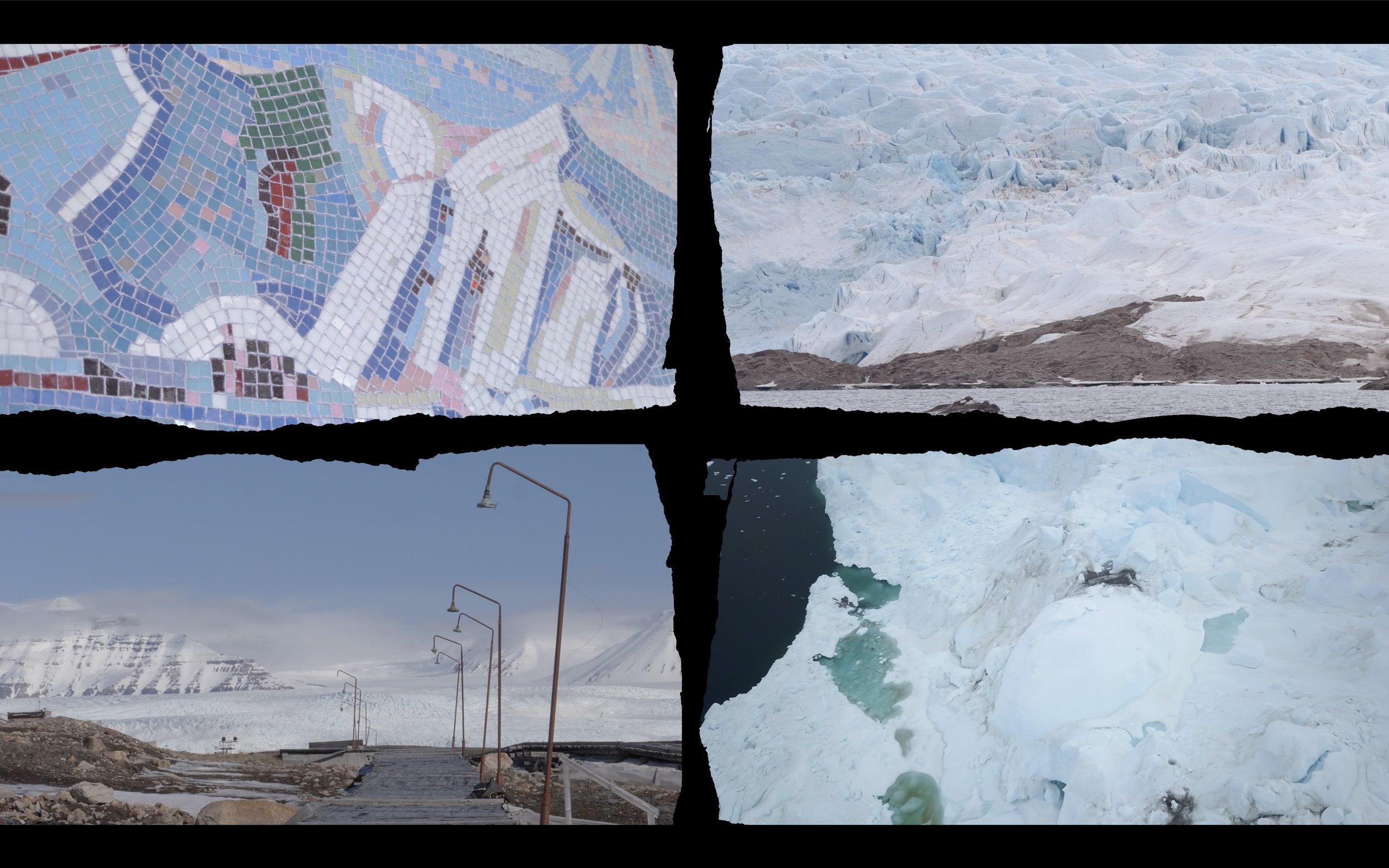Adam Sébire is an artist-filmmaker whose artworks explore climate change and the Anthropocene.
His artistic practise approaches its vast spatiotemporal dimensions through lens-based art, especially multi-screen video.
He’s also one of the Arctic Circle’s 4 million human inhabitants.
Having just opened his solo exhibition at Svalbard’s art gallery in March 2020, Australia’s borders closed against the pandemic for 18 months, marooning him in a lighthouse for 3 months; he now lives and works above Norway’s Arctic Circle. Adam studied documentary filmmaking at the national film schools of Australia & Cuba, going on to direct documentaries for Australian public broadcasters ABC & SBS. His experiences filming on Tuvalu in 2003, only 2m above the rising waters of the Pacific, turned his work towards climate change. He completed a masters and began a PhD to explore how the imperceptible elements of the climate emergency present particular representational challenges for lens-based art.
Adam’s own video art deploys beauty and mystery as the sharpest tools in the box, enlisting slow-, reverse- and fast-motion or borrowing climate scientists’ thermographic imagers. With the aid of a drone pilot’s license he adapts techniques from late Mediæval artists such as Hieronymus Bosch's elevated vantage point, to detach viewers from everyday perspectives; to suggest an overview on the state of our environment; to beckon a choice. He further applies their techniques of multi-panelled paintings (polyptychs) across multi-channel videos.
As artist, filmmaker & photographer Adam's artworks have exhibited widely, from Sydney Film Festival to Al Jazeera International; from the Deutsches Museum and Max Planck Institute to the South Australian Museum and Glasgow Science Centre during COP26; even the United Nations NYC headquarters. Adam won the critics’ prize in the 2021 Nordnorsken Kunstutstilling (Norway); the top video prize from the UK Royal Geographic Society’s EarthPhoto2023; and was invited to exhibit at the Wuhan and Chengdu Biennales in 2023. His videos & photos are licensed by climate communication organisations including ClimateOutreach and the UNFCCC.
REPRESENTATION
Adam’s artwork is non-exclusively represented by the 80:20 Artist Agency in Sydney, Australia.
Curriculum Vitæ
Research AREA
Synopsis
Taking a transhistorical approach I suggest that artworks comprising more than one spatially-interrelated frame may enable aesthetic access to ideas occupying time & space beyond everyday human perception. I then apply this idea to the problem of aesthetic representation of climate change, understood as ‘hyperobject', as proposed by Timothy Morton. How might 500-year old moveable diptychs, triptychs and polyptychs — updated as the 'video polyptych' — speak to us in our era of tactile, quasi-devotional engagement with screens? And can spatial montage between multiple screens help us come to terms with phenomena whose spatiotemporal dimensions are so great as to verge on the imperceptible?
My thesis posits multi-channel video installation as the contemporary descendant of the early Renaissance polyptych, beginning with the form at its most elemental — the diptych — before working up to the multi-panelled works of Jan van Eyck (1432) and Isaac Julien (2010). See examples, right.
As entire island nations verge on submergence our society drowns in visual information. Our dominant visual culture struggles to represent climate change with a limited repertoire of images distant to everyday lived experience (oil wells, polar bears, coal-fired power stations, Al Gore, coral bleaching, etc). And so my aesthetic experiments will create documentary polyptychs in which kinaesthetically-engaged spectators navigate moving images exploring cause/effect, here/there, past/present/future, across multiple screens.
To discuss the form’s affective potential, I borrow Gilles Deleuze’s movement-image & time-image as key concepts with which to provide an account of the potential of spatialised montage on both practical and philosophical levels. I then follow his leads — into Eisenstein’s dialectical montage, Vertov’s kino-eye, Gance's Polyvision, Proust’s stéréoscope intérieur, and even Francis Bacon’s triptychs — to discuss simultaneous presentation of multiple images across time and space ... at a time when a reliance on 'visible evidence’ is failing us profoundly and, more than ever, we need to view the world with fresh eyes.
— Adam Sébire 3/2016









